Lorenzo Galati-Giordano
Performance Analysis of IEEE 802.11bn Non-Primary Channel Access
Apr 22, 2025Abstract:This paper presents a performance analysis of the Non-Primary Channel Access (NPCA) mechanism, a new feature introduced in IEEE 802.11bn to enhance spectrum utilization in Wi-Fi networks. NPCA enables devices to contend for and transmit on the secondary channel when the primary channel is occupied by transmissions from an Overlapping Basic Service Set (OBSS). We develop a Continuous-Time Markov Chain (CTMC) model that captures the interactions among OBSSs in dense WLAN environments when NPCA is enabled, incorporating new NPCA-specific states and transitions. In addition to the analytical insights offered by the model, we conduct numerical evaluations and simulations to quantify NPCA's impact on throughput and channel access delay across various scenarios. Our results show that NPCA can significantly improve throughput and reduce access delays in favorable conditions for BSSs that support the mechanism. Moreover, NPCA helps mitigate the OBSS performance anomaly, where low-rate OBSS transmissions degrade network performance for all nearby devices. However, we also observe trade-offs: NPCA may increase contention on secondary channels, potentially reducing transmission opportunities for BSSs operating there.
Continuous Multi-Link Operation: A Contention-Free Mechanism for the Unlicensed Spectrum
May 15, 2024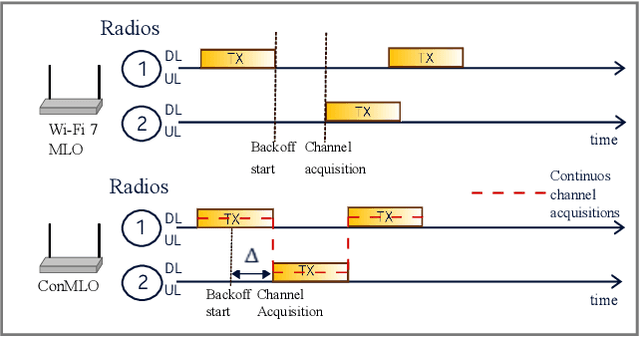
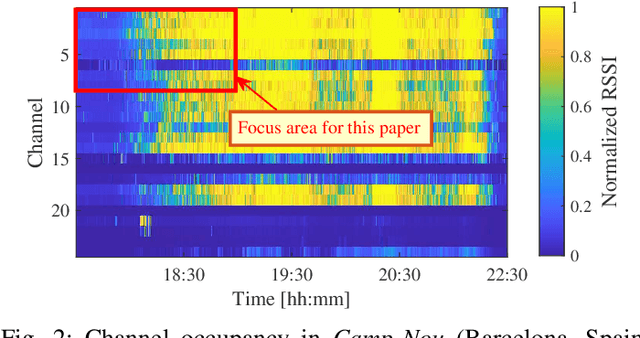
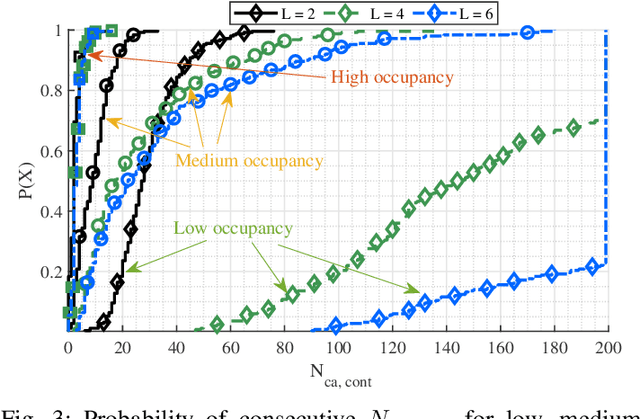
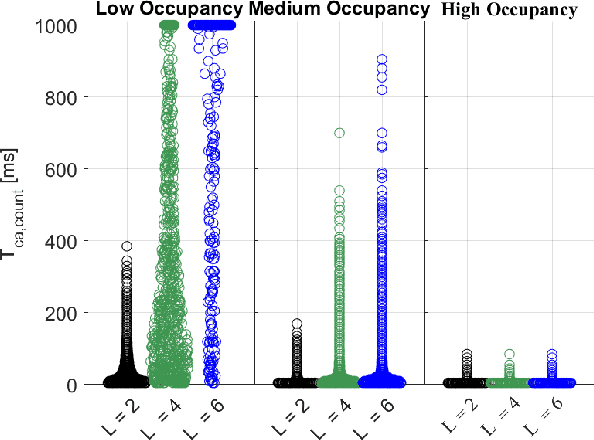
Abstract:This paper proposes a novel mechanism to enforce contention-free channel access in the unlicensed spectrum, as opposed to the traditional contention-based approach. To achieve this objective, we build on the Wi-Fi~7 multi-link operation (MLO) and define the means whereby independent channel access attempts are performed in all the addressable links to ensure one available channel/link is ready for transmission at all times, such that a sequence of continuous acquired channels can be maintained. We call this method continuous multi-link operation (ConMLO). In this work, we aim to verify the applicability of ConMLO, its ability to retain spectrum resources for a given duration of time, and its fairness with respect existing approaches, namely legacy single-link operation (SLO) and MLO. To this end, we use realistic data traffic measurements acquired in a crowded football stadium as an exemplary case of challenging spectrum occupation. Our results show that the proposed ConMLO can effectively guarantee continuous channel acquisition under different occupancy scenarios without compromising fairness of channel access compared to existing legacy modes.
Distributed Learning for Wi-Fi AP Load Prediction
Apr 22, 2024



Abstract:The increasing cloudification and softwarization of networks foster the interplay among multiple independently managed deployments. An appealing reason for such an interplay lies in distributed Machine Learning (ML), which allows the creation of robust ML models by leveraging collective intelligence and computational power. In this paper, we study the application of the two cornerstones of distributed learning, namely Federated Learning (FL) and Knowledge Distillation (KD), on the Wi-Fi Access Point (AP) load prediction use case. The analysis conducted in this paper is done on a dataset that contains real measurements from a large Wi-Fi campus network, which we use to train the ML model under study based on different strategies. Performance evaluation includes relevant aspects for the suitability of distributed learning operation in real use cases, including the predictive performance, the associated communication overheads, or the energy consumption. In particular, we prove that distributed learning can improve the predictive accuracy centralized ML solutions by up to 93% while reducing the communication overheads and the energy cost by 80%.
AI/ML-based Load Prediction in IEEE 802.11 Enterprise Networks
Oct 11, 2023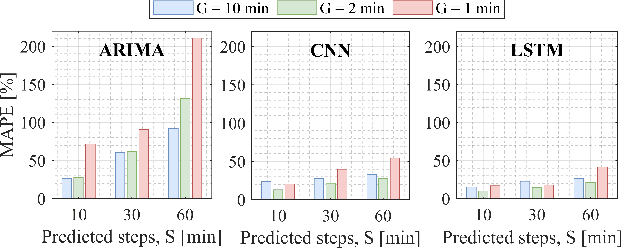
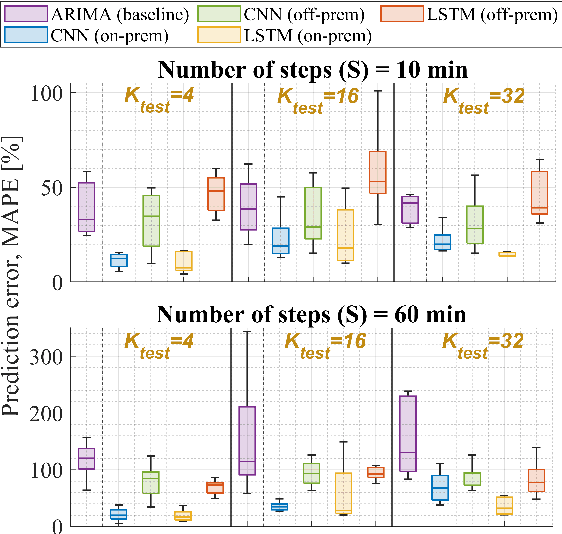
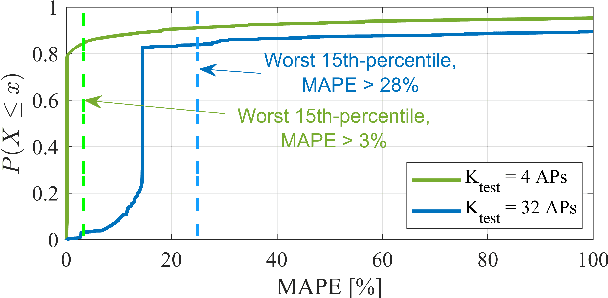
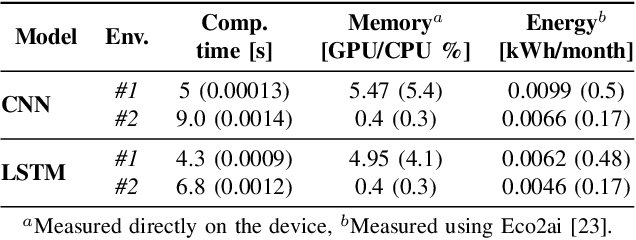
Abstract:Enterprise Wi-Fi networks can greatly benefit from Artificial Intelligence and Machine Learning (AI/ML) thanks to their well-developed management and operation capabilities. At the same time, AI/ML-based traffic/load prediction is one of the most appealing data-driven solutions to improve the Wi-Fi experience, either through the enablement of autonomous operation or by boosting troubleshooting with forecasted network utilization. In this paper, we study the suitability and feasibility of adopting AI/ML-based load prediction in practical enterprise Wi-Fi networks. While leveraging AI/ML solutions can potentially contribute to optimizing Wi-Fi networks in terms of energy efficiency, performance, and reliability, their effective adoption is constrained to aspects like data availability and quality, computational capabilities, and energy consumption. Our results show that hardware-constrained AI/ML models can potentially predict network load with less than 20% average error and 3% 85th-percentile error, which constitutes a suitable input for proactively driving Wi-Fi network optimization.
Throughput Analysis of IEEE 802.11bn Coordinated Spatial Reuse
Sep 17, 2023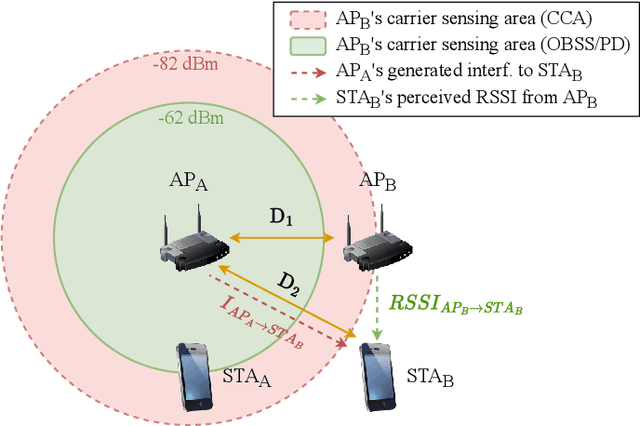
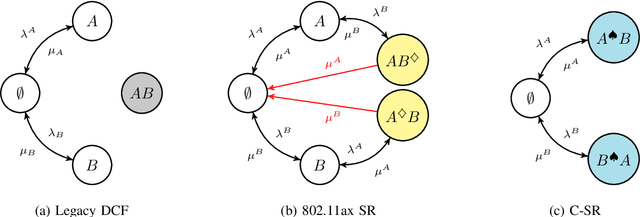
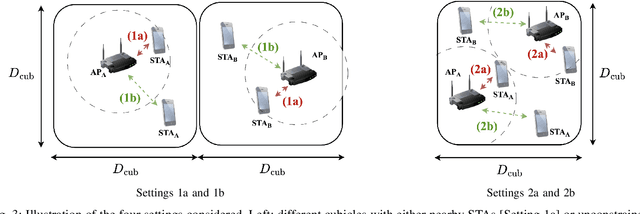

Abstract:Multi-Access Point Coordination (MAPC) is becoming the cornerstone of the IEEE 802.11bn amendment, alias Wi-Fi 8. Among the MAPC features, Coordinated Spatial Reuse (C-SR) stands as one of the most appealing due to its capability to orchestrate simultaneous access point transmissions at a low implementation complexity. In this paper, we contribute to the understanding of C-SR by introducing an analytical model based on Continuous Time Markov Chains (CTMCs) to characterize its throughput and spatial efficiency. Applying the proposed model to several network topologies, we show that C-SR opportunistically enables parallel high-quality transmissions and yields an average throughput gain of up to 59% in comparison to the legacy 802.11 Distributed Coordination Function (DCF) and up to 42% when compared to the 802.11ax Overlapping Basic Service Set Packet Detect (OBSS/PD) mechanism.
 Add to Chrome
Add to Chrome Add to Firefox
Add to Firefox Add to Edge
Add to Edge